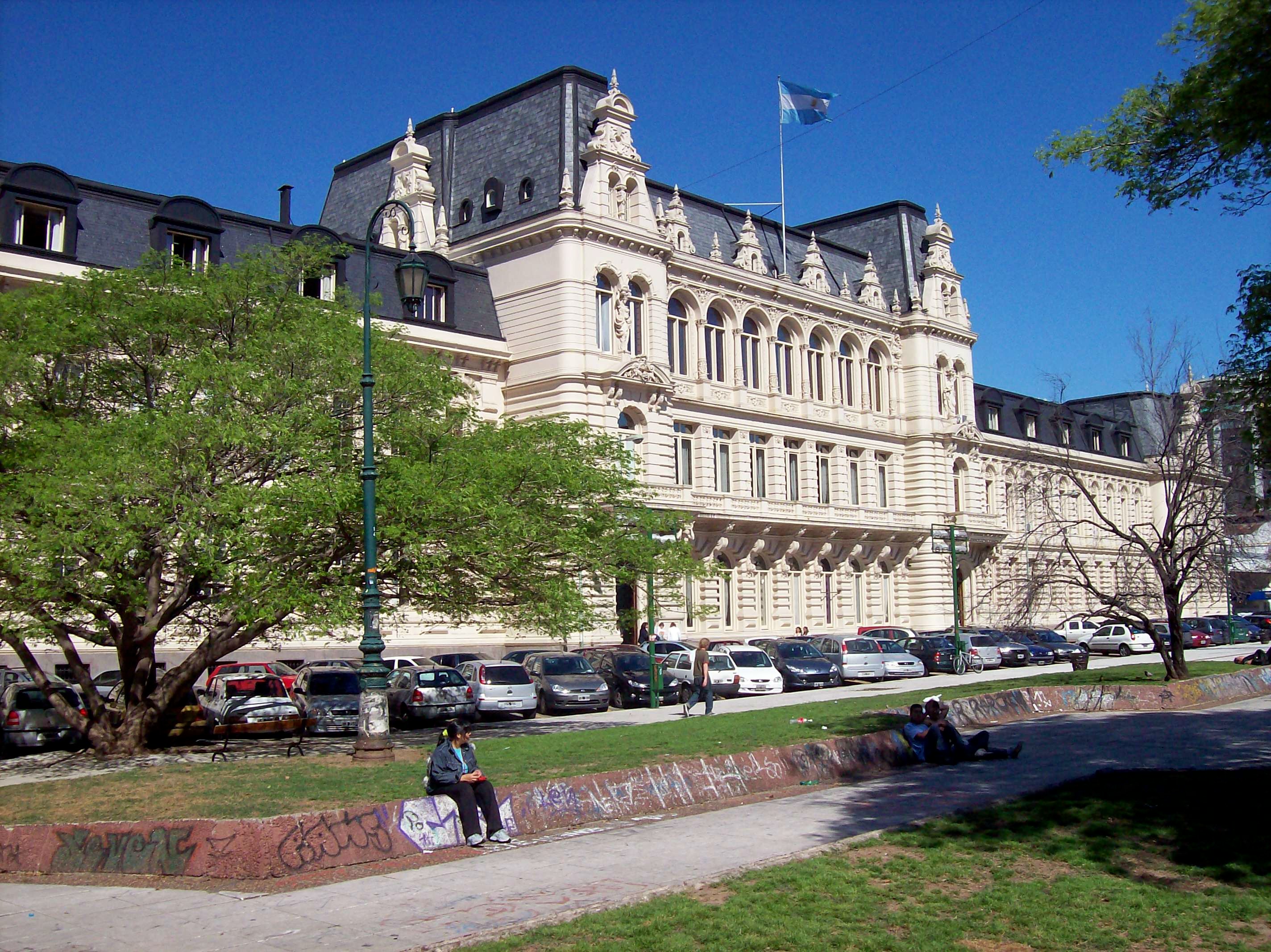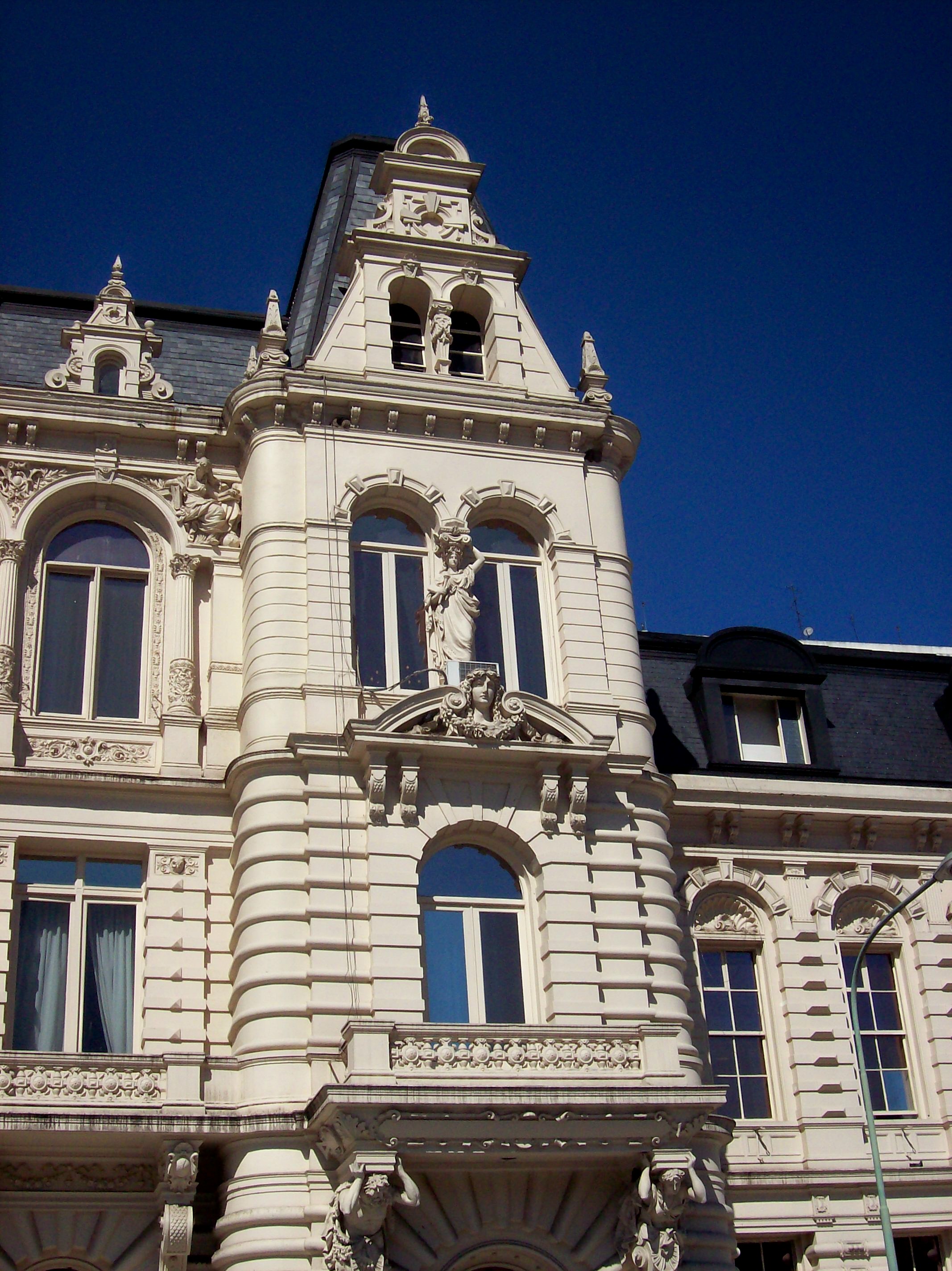Pizzurno Palace on:
[Wikipedia]
[Google]
[Amazon]
 The Sarmiento Palace, commonly known as the Pizzurno Palace, is an architectural landmark in the Recoleta section of
The Sarmiento Palace, commonly known as the Pizzurno Palace, is an architectural landmark in the Recoleta section of
 A will left by a local heiress, Petronila Rodríguez de Rojas, stipulated that her roughly lot in uptown Buenos Aires be used for an educational and charitable compound to include a church, an old-age asylum and a girls' school for no less than 700 pupils. Her 1882 death accordingly left the property to the city, which commissioned German Argentine architects Carlos Adolfo Altgelt and his cousin Hans Altgelt to design the requisite school.
Work began in 1886Mysteries of Buenos Aires, the creation of the Pizzurno Palace, http://misteriosabsas.blogspot.com/2012/03/palacio-pizzurno.html on the building which, per Mrs. Rojas' wishes, would include extensive museum and library facilities, as well. The building's design was eclectic, inspired by
A will left by a local heiress, Petronila Rodríguez de Rojas, stipulated that her roughly lot in uptown Buenos Aires be used for an educational and charitable compound to include a church, an old-age asylum and a girls' school for no less than 700 pupils. Her 1882 death accordingly left the property to the city, which commissioned German Argentine architects Carlos Adolfo Altgelt and his cousin Hans Altgelt to design the requisite school.
Work began in 1886Mysteries of Buenos Aires, the creation of the Pizzurno Palace, http://misteriosabsas.blogspot.com/2012/03/palacio-pizzurno.html on the building which, per Mrs. Rojas' wishes, would include extensive museum and library facilities, as well. The building's design was eclectic, inspired by
 The Sarmiento Palace, commonly known as the Pizzurno Palace, is an architectural landmark in the Recoleta section of
The Sarmiento Palace, commonly known as the Pizzurno Palace, is an architectural landmark in the Recoleta section of Buenos Aires
Buenos Aires, controlled by the government of the Autonomous City of Buenos Aires, is the Capital city, capital and largest city of Argentina. It is located on the southwest of the Río de la Plata. Buenos Aires is classified as an Alpha− glob ...
and the location of the Argentine Ministry of Education
The Secretariat of Education (, formerly Ministry of Education) of Argentina is a secretariat and former ministry of the national executive power that oversaw education policies on all educational levels, alongside the governments of the twenty ...
.
Overview
 A will left by a local heiress, Petronila Rodríguez de Rojas, stipulated that her roughly lot in uptown Buenos Aires be used for an educational and charitable compound to include a church, an old-age asylum and a girls' school for no less than 700 pupils. Her 1882 death accordingly left the property to the city, which commissioned German Argentine architects Carlos Adolfo Altgelt and his cousin Hans Altgelt to design the requisite school.
Work began in 1886Mysteries of Buenos Aires, the creation of the Pizzurno Palace, http://misteriosabsas.blogspot.com/2012/03/palacio-pizzurno.html on the building which, per Mrs. Rojas' wishes, would include extensive museum and library facilities, as well. The building's design was eclectic, inspired by
A will left by a local heiress, Petronila Rodríguez de Rojas, stipulated that her roughly lot in uptown Buenos Aires be used for an educational and charitable compound to include a church, an old-age asylum and a girls' school for no less than 700 pupils. Her 1882 death accordingly left the property to the city, which commissioned German Argentine architects Carlos Adolfo Altgelt and his cousin Hans Altgelt to design the requisite school.
Work began in 1886Mysteries of Buenos Aires, the creation of the Pizzurno Palace, http://misteriosabsas.blogspot.com/2012/03/palacio-pizzurno.html on the building which, per Mrs. Rojas' wishes, would include extensive museum and library facilities, as well. The building's design was eclectic, inspired by Second Empire architecture
Second Empire style, also known as the Napoleon III style, is a highly eclectic style of architecture and decorative arts originating in the Second French Empire. It was characterized by elements of many different historical styles, and al ...
influenced by both French and German Renaissance Revival architecture
Renaissance Revival architecture (sometimes referred to as "Neo-Renaissance") is a group of 19th-century Revivalism (architecture), architectural revival styles which were neither Greek Revival architecture, Greek Revival nor Gothic Revival ar ...
. It was completed in 1888, and the Petronila Rodríguez de Rojas School was inaugurated in 1893. The majestic landmark was soon earmarked for use as government offices, however, and the National Education Council was installed there in 1903; the National Education Council (since dissolved) administered Argentina's system of national secondary schools. The building was rebaptized as the Sarmiento Palace in honor of former Education Minister and President Domingo Sarmiento
Domingo Faustino Sarmiento (15 February 1811 – 11 September 1888) was President of Argentina from 1868 to 1874. He was a member of a group of intellectuals, known as the ''1837 generation, Generation of 1837'', who had a great influence on 19t ...
, who made " the education of a sovereign people" a policy centerpiece during his prosperous 1868-74 tenure.
The building's location facing leafy Rodríguez Peña Plaza created an urban oasis in the otherwise bustling Barrio Norte section of the upscale Recoleta ward. A lot immediately to the south of the building was converted into Petronila Rodríguez de Rojas Plaza (a playground) as a belated homage to the civic-minded lady during the 1950s (as was a primary school in the Parque Chas
Parque Chas is a neighborhood in Buenos Aires, Argentina, reinstated on 6 December 2005 through By-law No. 1907/06.
Parque Chas is the smallest district in Buenos Aires and is bounded by La Pampa, Triunvirato, Combatientes de Malvinas, Chorroarí ...
neighborhood, in 1934).
The last dictatorship, which dissolved the Education Council in 1978, transferred the Ministry of Education to the building in 1980. Still officially known as the Sarmiento Palace, the building is popularly known as the Pizzurno Palace for the side street built facing it, which was renamed in honor of pedagogian and local primary school system pioneer Pablo Pizzurno, following his death in 1940.
References
{{DEFAULTSORT:Pizzurno Palace Education in Argentina Libraries in Argentina Palaces in Buenos Aires Government buildings in Argentina National Historic Monuments of Argentina School buildings completed in 1888 Renaissance Revival architecture in Argentina